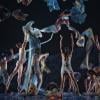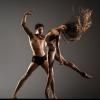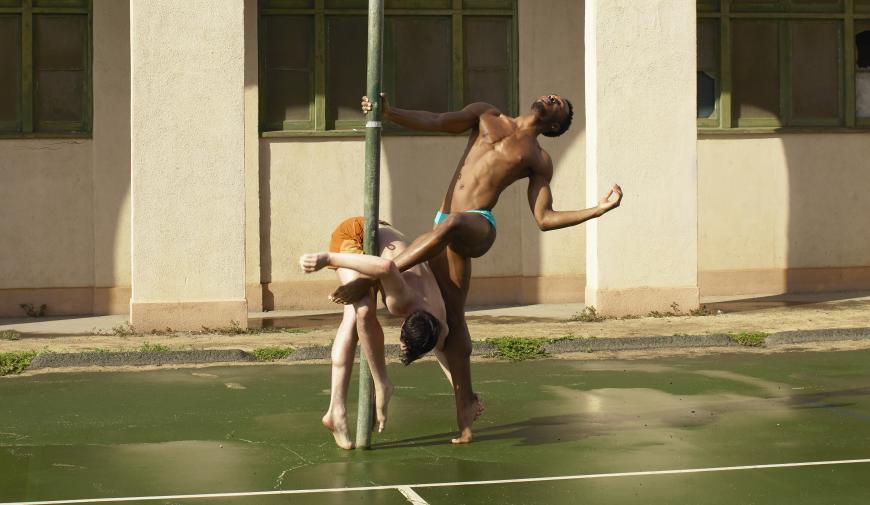
Hawaii is known and adored for its volcanic energy, breathtaking vistas, abundant plant and animal life, and raw beauty. Choreographer Alonzo King and photographer Richard Misrach have cultivated similar artistic values. Since 1982, King’s LINES Ballet has transfixed audiences with technique and architectural craft founded in classical ballet, which is swept up into an ocean of multicultural influences and projected onstage through the dancers’ revelatory physicality. Misrach’s work over the past five decades has impacted the field of photography with large-scale color images and installations that place an accent on environmental awareness and the juxtaposition of mankind and nature. Common to both artists’ work is the vitality of connection: human to human, human to nature, sentient being to spiritual realm, and more.
Now, a world premiere has King and Misrach joining forces with Grammy Award-winning vocalist Lisa Fischer April 15–23 at Yerba Buena Center for the Arts in San Francisco. Last winter, the choreographer, photographer, and 13 LINES Ballet dancers traveled to Hawaii for an immersive photoshoot, mostly on the coastal shores and rocky volcanic cliffs alongside the ocean. Misrach’s photographs are woven into the new dance work, while Fischer will perform live onstage.
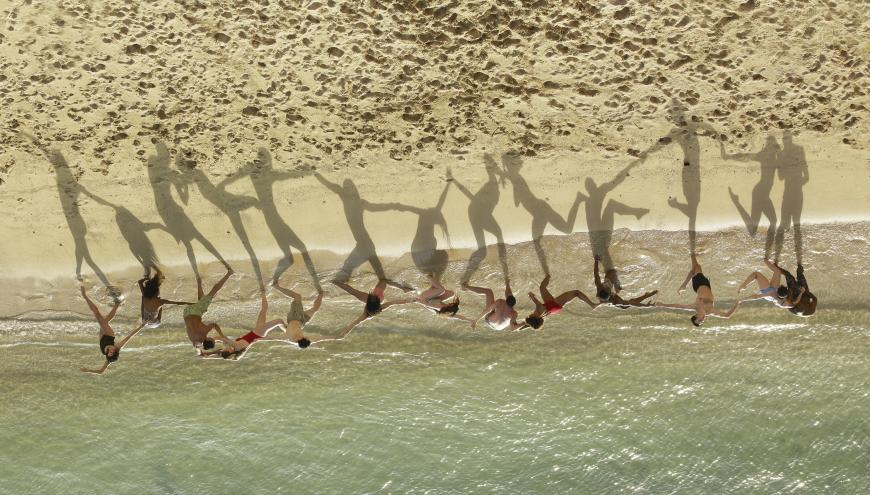
One week before the April 15 opening gala, Misrach spoke with SF Classical Voice about his introduction to King’s company (via a performance that changed his mind entirely about making images of dancer), the ins and outs of collaboration, and the excitement he feels when last-minute decisions might be made only moments before the curtain rises.
What was it about the LINES Ballet performance you attended in 2022 that, astonishingly, had you wanting to photograph the dancers?
In the performance I saw in the spring of 2022, there were two pieces in particular, one where a couple was dancing and laughing hysterically through the whole piece and another where one dancer dragged another’s limp body across the stage. Those pieces ruptured my notion of what dance could be. It was very powerful. That night I had a dream where both those dances happened on giant boulders in the desert, and I was photographing them, and my photographing them was part of the dance. I wrote Alonzo an account of my dream, and he said, “Let’s do it”.
What memories of your experience with the dancers in Hawaii do you recall most vividly?
What you don’t see in the photograph James on Cliffs is that this was a split second in nonstop movement. The dancers spread out over the volcanic cliffs overhanging the sea. [LINES dancer] James [Gowan] sprawled upside down suddenly, and precipitously, and never stopped moving — I was immediately reminded of the figures in the great [Théodore Géricault] painting The Raft of the Medusa. To this day, I haven’t had a chance to ask him if he was trying to imitate that.
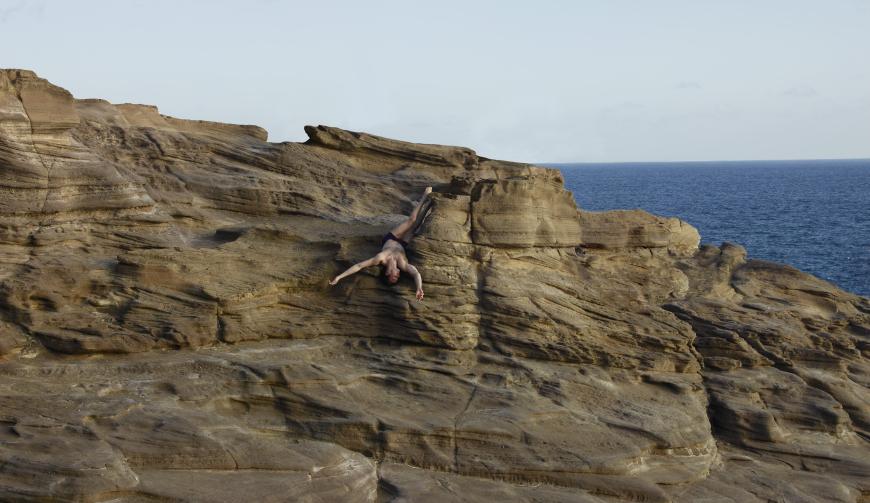
For Shadow Ballet and its reverse versions: In a book of mine that was published last year, Notations, which is all about the negative image, the opening picture is of a man casting his shadow on the beach. I was always struck by how when I turned the image into a negative, suddenly the shadow became prominent, and the man casting it receded. I thought, “Wouldn’t it be cool to have the shadows — not the dancers — dance with each other?” So we took the dancers to that exact same spot and, from the same vantage point, photographed and filmed them. When the image is positive, the dancers are prominent, but when turned into a negative, the same image suddenly foregrounds the shadows, and the dancers kind of disappear.
Looking at those images now, does your analyzing eye notice things your in-the-moment eye did not recognize as compelling, at least not consciously?
I would say that the action, whether on the cliffs or in the ocean, was nonstop. And during the moment, I was making exposures fast and furious, relying on instinct. I only make sense of them afterward in the editing stage, which will probably take me another year to complete. I made almost 2,000 images in 5 days, a new record for me, and there’s no way I could get through them all in time for the premiere next week.
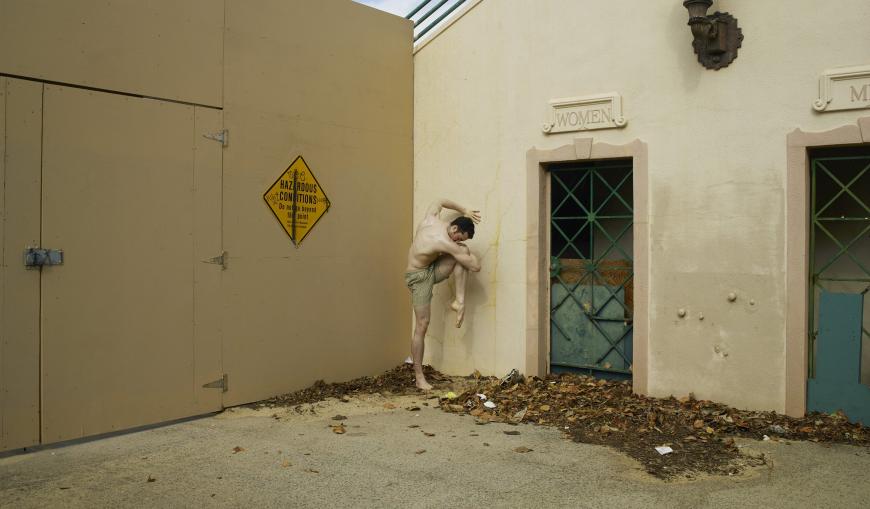
Do you have any idea of how the images will be used by Alonzo in the onstage production?
Alonzo’s use — I have no idea what shape that will take. Apparently, that will be a process, including the final image selection, not to be finalized until right up to the first performance. I am on the edge of my seat!
What words or phrases might you use to define the collaborative process, specifically with the dancers? And what words or stories spring to mind regarding your partnership with King?
In a dynamic contrast to the dancers artfully choreographed by Alonzo on the stage, the dancers in Hawaii were shaped by the powerful forces of nature, whether barefoot on sharp, rocky cliffs or by the tides and waves of the ocean, and by their individual wills. I didn’t tell them what to do; each responded independently of the other. Sometimes, they came together as a group, as in the Shadow Ballet with Robert Rosenwasser directing them, but most of the time they did their own thing. I just captured the rapidly changing moment to moment. And they were glorious. Working with those dancers will go down as one of my all-time favorite life experiences.
A lot of my work is political, often very heavy. Alonzo said something early on about how the world needs joy and beauty. There is so much frightening and disturbing news, it is really important to remind ourselves of that which is glorious in life. Those 13 dancers gave me so much joy and hope — it was a thrill to celebrate that. Alonzo opened that door.


